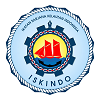DETEKSI SUHU PERMUKAAN LAUT (SPL) MENGGUNAKAN SATELIT
Abstract
ABSTRACT
Sea surface temperature (SST) can be measured by instrument on the ship or buoys on same spots, however, it can’t give information on a wide area or on a global scale. Therefore, we needs remote sensing system which it can be used for SST measurement. This system be able to estimate SST on an larger region and within a short time. The aims of the study were to explain and understand the SST estimation using remote sensing system using literature studies. There are several remote sensing satellite system that can be used to estimate SST such as MODIS, NOAA AVHRR, and TRMM (Microwave). SST average in Indonesian water based on NOAA AVHRR estimation was 26-31oC (1993-2003) with >90% accuracy. Highest SST range in July 2015 was 29.1-29.8oC (MODIS estimation) with corelation coefisien values was 0.72 dan RMSE 0.74oC. On west Indonesian water (north Papua), SST estimation was in the range of 29.10-29.36°C (Aqua MODIS) and 28.88-29.19°C (Terra MODIS) with RMSE values of 0.2461°C (Aqua) and 0.4854°C (Terra). SST estimation on this water using NOAA AVHRR (2010-2012) was about 29.11-29.65oC with RMSE 0.2228°C. The accuracy of microwave sensor estimated SST was about 0.5oC within a free cloud case. SST range (TRMM/Microwave, 2008) in Indonesian water was about 21-31ºC. Using NLSST formula, SST estimation produced the highest accuracy with coefficient determination of 0.95 and RMSE 0.24 K. There were different estimated values from using same remote sensing satellite that’s. Generally, SST estimated highest acurracy by NOAA AVHHR that has lowest error, but can be effected by clouds. Different with Microwave sensor (TRMM) that free clouds coverage but has middle acuration for SST estimation.
Keywords: Sea Surface Termperature, NOAA-AVHRR, MODIS, TRMM/Microwave Sensor
ABSTRAK
Pada mulanya, pengukuran suhu permukaan laut (SPL) dilakukan menggunakan alat langsung di kapal ataupun pelampung (buoy) pada titik tertentu, namun tidak dapat memberikan informasi luas dan skala global. Diperlukan sistem penginderaan jauh untuk pengukuran SPL secara spasial dan temporal, sistem tersebut mampu menganalisis area dalam skala luas, sulit ditempuh, dan dalam waktu singkat. Tujuan kajian adalah melakukan pendeteksian SPL dengan sistem penginderaan jauh, melalui ulasan kajian yang sudah dilakukan oleh berbagai ilmuan. Beberapa satelit penginderaan jauh yang dapat melakukan pendeteksian SPL yaitu satelit MODIS, NOAA dan TRMM (Microwave). Rata-rata SPL di perairan Indonesia adalah 26-31oC (estimasi NOAA, 1993 – 2003), akurasi >90 % dan selisih SPL pengukuran lapang dan estimasi sebesar 0.2oC. Kondisi SPL di Indonesia cukup tinggi terjadi pada bulan Juli 2015 dengan kisaran 29.1-29.8oC (estimasi MODIS), nilai koefisien korelasi r=0.72 dan RMSE 0.74oC. Pada perairan timur Indonesia (utara Papua), hasil SPL estimasi MODIS (Aqua) adalah sebesar 29.10-29.36°C, MODIS (Terra) sebesar 28.88-29.19°C. Nilai RMSE yang diperoleh dari interpretasi citra MODIS yaitu 0.2461oC (Aqua) dan 0.4854oC (Terra). Pada perairan tersebut, nilai SPL rata-rata sebesar 29.11-29.65oC (estimasi NOAA, tahun 2010-2012) dengan bias sebesar -0.43 dan rata-rata RMSE 0.2228oC. Akurasi sensor microwave dalam estimasi SPL mencapai 0.5°C, bebas dari pengaruh tutupan awan. Sebaran SPL (TRMM/Microwave tahun 2008) pada perairan Indonesia sebesar 21-31ºC. Menggunakan formula/algoritma NLSST, estimasi SST menghasilkan akurasi lebih baik dengan nilai koefisien korelasi 0.95 dan RMSE 0.24 K. Terdapat perbedaan nilai estimasi dari penggunaan beberapa citra satelit yang digunakan tersebut. Secara umum, nilai SPL lebih baik terdapat pada pengukuran satelit NOAA-AVHRR dengan bias dan RMSE yang cukup rendah, namun beresiko karena terpengaruh oleh tutupan awan. Untuk penggunaan sensor Microwave (TRMM) memiliki akurasi sedikit lebih tinggi namun tidak terpengaruh dari tutupan awan tersebut.
Kata kunci: Suhu Permukaan Laut, SPL, NOAA-AVHRR, MODIS, TRMM/Sensor Microwave
Full Text:
PDF (Bahasa Indonesia)References
Aini, M. Q. (2007). Kajian Distribusi Potensi Fitoplankton Di Sebagian Laut Utara Jawa Mengunakan Citra MODIS. In Proceeding Geo-Marine Research Forum 2007.
Annas, R. (2009). Pemanfaatan Data Satelit MODIS Untuk Menentukan Suhu Permukaan Laut. Fakultas Teknik. Universitas Indonesia, 1–10.
Arief, M., Adawiah, S. W., Parwati, E., Hamzah, R., & Prayogo, T. (2015). Pengembangan Model Ekstraksi Suhu Permukaan Laut Menggunakan Data Satelit Landsat 8 (Studi Kasus Teluk Lampung). Jurnal Penginderaan Jauh, 12(2), 107–122.
Ayu, D., Bangun, M., & Lalu, M. (2012). Studi Perubahan Suhu Permukaan Laut. ITS.
Bayat, F., & Hasanlou, M. (2016). Feasibility Study of Landsat-8 Imagery For Retrieving Sea Surface Temperature (Case Study Persian Gulf). In Remote Sensing and Spatial Information Science (Vol. XLI, pp. 1107–1110). https://doi.org/10.5194/isprsarchives-XLI-B8-1107-2016
Cahyono, A. B., Armono, H. D., & Saptarini, D. (2017). Estimation of Sea Surface Temperature ( SST ) Using Split Window Methods for Monitoring Industrial Activity in Coastal Area, (Januari).
Chelton, D. B., & Wentz, F. J. (2005). Global Microwave Satellite Observations of Sea Surface Temperature for Numerical Weather Prediction and Climate Research. Americal Meterological Society Journal, (AUGUST), 1097–1115. https://doi.org/10.1175/BAMS-86-8-1097
Gaol, J. L., Arhatin, R. E., & Ling, M. M. (2014). Pemetaan Suhu Permukaan Laut Dari Satelit Di Perairan Indonesia Untuk Mendukung “One Map Policy.” In Seminar Nasional Penginderaan Jauh 2014 (pp. 433–442).
Hamuna, B., Paulangan, Y. P., & Dimara, L. (2015). Kajian Suhu Permukaan Laut Mengunakan Data Satelit Aqua-MODIS di Perairan Jayapura, Papua. Jurnal Depik Unsyiah, 4(3), 160–167.
Harsanugraha, W. K., & Parwati, E. (1992). Aplikasi Algoritma Multi Kanal Untuk Estimasi SST Menggunakan Data AVHRR/2 NOAA-11. Jakarta: LAPAN.
Hartoko, A. (2013). Oseanographic Characteristers and Plankton Resources of Indonesia. Yogyakarta: Graha Ilmu.
Hasyim, B., Sulma, S., & Hartuti, M. (2010). Kajian Dinamika Suhu Permukaan Laut Global Menggunakan Data Penginderaan Jauh Microwave. Majalah Sains Dan Teknologi Dirgantara, 5(4), 130–143.
Hutabarat, S., & Evans, S. M. (2014). Pengantar Oseanografi (2nd ed.). Jakarta: UI Press.
Irons, J. R., Dwyer, J. L., & Barsi, J. A. (2012). The next Landsat satellite : The Landsat Data Continuity Mission. Remote Sensing of Environment, xxx(xxx–xxx). https://doi.org/10.1016/j.rse.2011.08.026
Jaelani, L. M., & Alfatinah, A. (2017). Sea Surface Temperature Mapping at Medium Scale Using Landsat 8-TIRS Satellite Image. In Regional Conference in Civil Engineereing (pp. 582–587). Surabaya, Indonesia. https://doi.org/10.12962/j23546026.y2017i6.3307
Kemili, P., & Putri, M. R. (2012). Pengaruh Durasi dan Intensitas Upwelling Berdasarkan Anomali Suhu Permukaan Laut Terhadap Variabilitas Produktivitas Primer di Perairan Indonesia. Jurnal ITKT, 4(1), 66–79.
Knight, E. J., & Kvaran, G. (2014). Landsat-8 Operational Land Imager Design, Characterization and Performance. Semote Sensing Journal, 6, 10286–10305. https://doi.org/10.3390/rs61110286
LAPAN [Lembaga Penerbangan dan Antariksa Negara]. (2000). Pola Distribusi Suhu Permukaan Laut (SPL) dan Klorofil untuk Penentuan Daerah Potensi Ikan Laut di Perairan Maluku. Jakarta.
Nababan, B. (2018). Ocean Color Satellite And Its Applications.
Nababan, B., & Simamora, K. (2012). Variabilitas Konsentrasi Klorofil-A dan Suhu Permukaan Laut di Perairan Natuna. Jurnal Ilmu Dan Teknologi Kelautan Tropis, 4(1), 121–134.
NASA [National Aeronautics and Space Administration]. (n.d.). Sea Surface Temperature. Retrieved October 4, 2018, from https://podaac.jpl.nasa.gov/SeaSurfaceTemperature.
Ndossi, M. I., Avdan, U., Ndossi, M. I., & Avdan, U. (2016). Application of Open Source Coding Technologies in the Production of Land Surface Temperature (LST) Maps from Landsat: A PyQGIS Plugin. Jurnal Remote Sensing, 8(5).
NOAA [National Centers for Environmental Information]. (n.d.). Sea Surface Temperature and Winds. Retrieved October 4, 2018, from https://www.ncdc.noaa.gov/data-access/model-data/model-datasets/sea-surface-temperatures-sst-and-winds.
Nontji, A. (2007). Laut Nusantara (5th ed.). Jakarta: Djambatan.
Nurheryanto. (2009). Sebaran Suhu Permukaan Laut di Perairan Utara Sumbawa Menggunakan Citra Satelit MODIS. IPB.
Qu, T., Du, Y., Strachan, J., Meyers, G., & Slingo, J. (2005). Sea Surface Temperature and Its Variability In The Indoneisan Region. Journal of Oceanography, 18(4), 50–61.
Ritchie, J. C., & Charles, M. C. (2001). Remote Sensing Technique for Determining Water Quality: Applications to TMDLs. In TMDL Science Issues Conference (pp. 367–374).
Sipayung, S. B., Krismianto, & Risyanto. (2016). Analisis Temperatur dan Uap Air Berbasis Satelit TERRA/AQUA (MODIS, LEVEL-2). Jurnal Penginderaan Jauh, 13(1), 23–34.
Sunarernanda, D. P., Sasmito, B., Prasetyo, Y., & Wirasatria, A. (2017). Analisis Perbandingan Data Citra Satelit Eos Aqua/Terra Modis dan NOAA AVHRR Menggunakan Parameter Suhu Permukaan Laut. Jurnal Geodesi UNDIP, 6(1), 218–227.
Suwargana, N., & Arief, M. (2004). Penentuan Suhu Permukaan Laut dan Konsentrasi Klorofil Untuk Pengembangan Model Prediksi Fishing Ground Dengan Menggunakan Data Modis. Jurnal Penginderaan Jauh Dan Pengolahan Data Citra Digital, 1(1), 1–13.
Sverdrup, H. U., Johnson, M. W., & Fleming, R. H. (1942). The Oceans, Their Physics, Chemistry, and General Biology. Prentice-Hall, New York.
Syaifullah, M. D. (2015). Suhu Permukaan Laut Perairan Indonesia dan Hubungannya dengan Pemanasan Global. Jurnal SEGARA, 11(2), 103–113.
Syariz, M. A., Jaelani, L. M., Subehi, L., Pamungkas, A., Koenhardono, E. S., & Sulisetyono, A. (2015). Retrieval of Sea Surface Temperature Over Poteran Island Water of Indonesia with LANDSAT 8 TIRS IMAGE : A Preliminary Algorithm. In Remote Sensing and Spatial Information Science (Vol. XL-2/W4, pp. 87–90). Kuala Lumpur, Malaysia. https://doi.org/10.5194/isprsarchives-XL-2-W4-87-2015
Tampubolon, A. B., Gustin, O., & Chayati, S. N. (2016). Pemetaan Suhu Permukaan Laut Menggunakan Citra Satelit AQUA MODIS di Perairan Provinsi Kepulauan Riau, 1–11. https://doi.org/10.13140/RG.2.2.11693.08161
Tubalawony, S. (2009). Variabilitas Suhu Permukaan Laut dan Kaitannya Dengan Sistem Angin Muson di Perairan Selatan Jawa - Sumbawa. Jurnal SEGARA, 5(1), 1–13.
USGS [U.S. Gelogical Survey]. (n.d.). About Landsat. Retrieved November 10, 2018, from https://landsat.usgs.gov/about-landsat.
USGS [U.S. Geological Survey]. (n.d.). Advanced Very High Resolution Radiometric (AVHRR) Sensor Characteristics. Retrieved October 21, 2018, from https://ita.cr.usgs.gov/1km/avhrr_sensor.
USGS [U.S. Geological Survey]. (2013). Using the USGS Landsat Product.
Wentz, F. J., & Meissner, T. (2007). Algorithm Theoretical Basis Document for AMSR-E Ocean Algorithms. RSS Tech, 1–6.
Wyrtki, K. (1961). NAGA REPORT (Scientific Results of Marine Investigations of the South China Sea and the Gulf of Thailand 1959-1961) (2 ed). La Jolla, California: Scripps Institution of Oceanography - The University of California.
Yati, E., Setiawan, K. T., Manopo, A. K., Budhiman, S., & Hasyim, B. (2014). Analisis Multitemporal Sebaran Suhu Permukaan Laut di Perairan Lombok Menggunakan Data Penginderaan Jauh MODIS. In Seminar Nasional Penginderaan Jauh 2014 (pp. 470–479).
Yusniati, M. (2006). Analisis Spasial Suhu Permukaan Laut di perairan Laut Jawa pada Musim Timur dengan Menggunakan Data Digital Satelit NOAA16-AVHRR. IPB.
Zahroh, L., & Sukojo, B. M. (2016). Analisis Suhu Permukaan Laut untuk Penentuan Daerah Potensi Ikan Menggunakan Citra Satelit Modis Level 1B (Studi Kasus: Selat Bali). Jurnal Teknik ITS, 5(2), A846–A849.
DOI: https://doi.org/10.21107/jk.v13i2.7257
Refbacks
- There are currently no refbacks.

This work is licensed under a Creative Commons Attribution 4.0 International License.

Jurnal Kelautan by Program Studi Ilmu Kelautan is licensed under a Creative Commons Attribution 4.0 International License.
Published by: Department of Marine Sciences, Trunojoyo University of Madura













